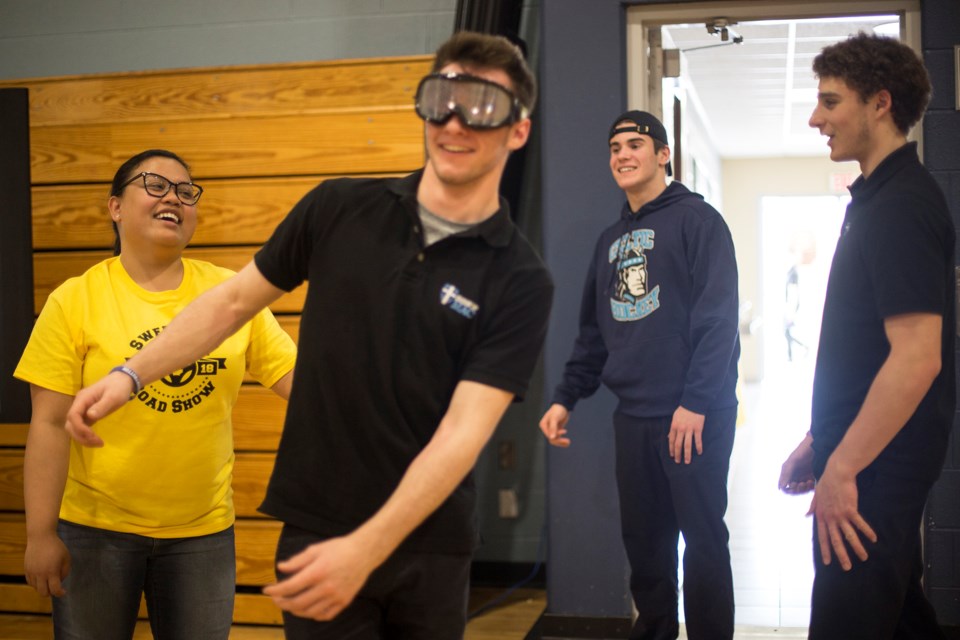Teenagers may think they know everything about drug and alcohol impairment while driving, but the vice-principal of a local high school says a travelling display focusing on road safety may be challenging that notion.
Grade 10 and 11 students at Bishop Macdonell Catholic High School learned valuable driving lessons on Tuesday when visited by the Sweet Life Road Show.
The students were separated into groups of about 12- 15 students, rotating between 10 different stations within the gymnasium and outside.
The road show focuses on the top 10 driving risks for teens, including alcohol consumption, impairment by drugs, distracted driving and not wearing seat belts.
Sweet Life Road show is presented by Teens Learn to Drive, Inc. — a non-profit organization based in Mississauga, Ont. The tour is sponsored by CAA, Springboard and arrive alive DRIVE SOBER.
The timing for the presentations is timely, said Brian Halford, vice-principal of Bishop Mac high school.
“We have proms coming up the weather is getting nicer and the kids are celebrating different things in June and into the summer time,” said Halford.
Students may think they know all there is about the dangers associated with driving, but Halford said he observed many students surprised by some of the presentations.
Much of the information in the road show is already in the curriculum, noted Halford, but he said students may glean more from the way it was presented on Tuesday.
“If we can prevent accidents and deaths just from presenting this information to the kids, I think it’s a good thing,” said Halford.
Sgt. Ross Keller of the Guelph Police Service was on hand Tuesday, manning one station focused on the importance of wearing seatbelts.
“When there’s a spare or a lunch hour they’re hopping in their vehicles and going for lunch and having fun, so we want to stress all of the rules of the road and the safe aspects of operating a motor vehicle,” said Keller.
He said the Grade 10 and 11 students are the drivers of the future.
“We want to engage with them and work together with them to teach them safe practices when operating a motor vehicle,” said Keller.
Both Keller and Halford agreed it was important for the students to understand the effects of cannabis on drivers, especially with the expected legalization of marijuana for people age 19 and up.
“We still don’t know how this is going to play out,” said Keller of the future cannabis legalization.
At one station, students are invited to wear goggles that simulate the vision of someone who is driving impaired.
“They are trying to walk in a straight line and feel what it’s like to be under the influence,” said Halford.
Other stations were set up in a game-show style, allowing students to try and answer questions about the laws surrounding alcohol and marijuana use for drivers.
The person manning one booth poured a drink into a red solo cup and asked the students in that group how many servings of alcohol were in it. Some guessed as few as two, but the actual answer was seven and a half.
“They are surprised at some of the answers,” said Halford.
